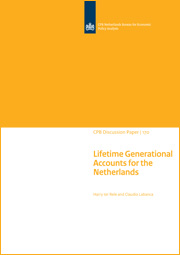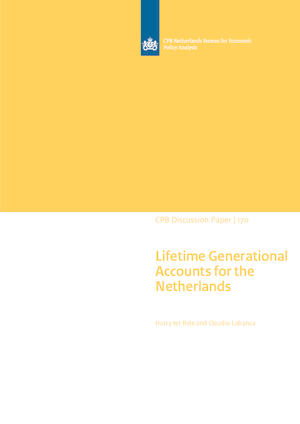Lifetime Generational Accounts for the Netherlands

The calculations are carried out for the Netherlands and for the cohorts born as from 1946. The more complete picture may be helpful for political decision making on equitable intergenerational policies. A second contribution of this paper is that it uses a more comprehensive benefit concept than other such studies by including non-cash benefits as well.
The results point out that the lifetime net benefits are positive for almost all of the cohorts considered. Only the very first of the post war cohorts have negative net benefits. Net benefits rise sharply for the younger cohorts, mainly due to increasing benefits from education, health care and general government. They reach a peak for those born between 1960 and 1990. Due to austerity measures that are necessary to restore sustainability of public finances, they decline again for the cohorts after 1990.
Technical appendix
This technical appendix serves two purposes. The first describes the procedure of the calculations in details. This may be helpful to those who want to replicate the results or who want to perform similar calculations for other countries. The second purpose is that it records exactly where the data and the calculating procedures are stored.
It contains links to the inputfiles and the outputfiles (both in Excel). If the hyperlinks doesn't work, please access the files working with the accompanying article.
It also contains a file that presents how the present value calculations are carried out. However, these calculations are carried out in a model solving program used at CPB and may not be transferable. It serves as an aid for those who want to replicate the calculations but cannot be readily used by other institutions.
